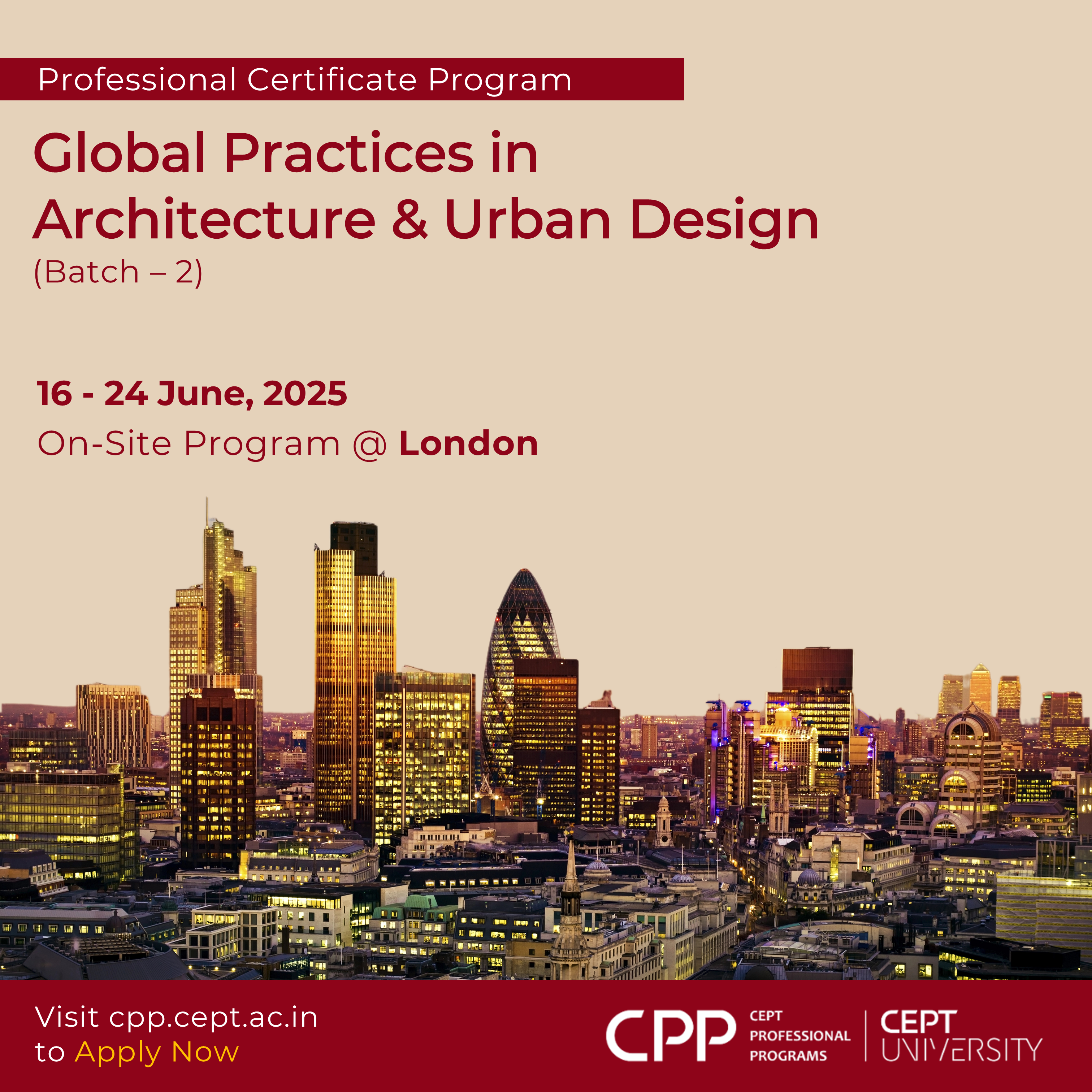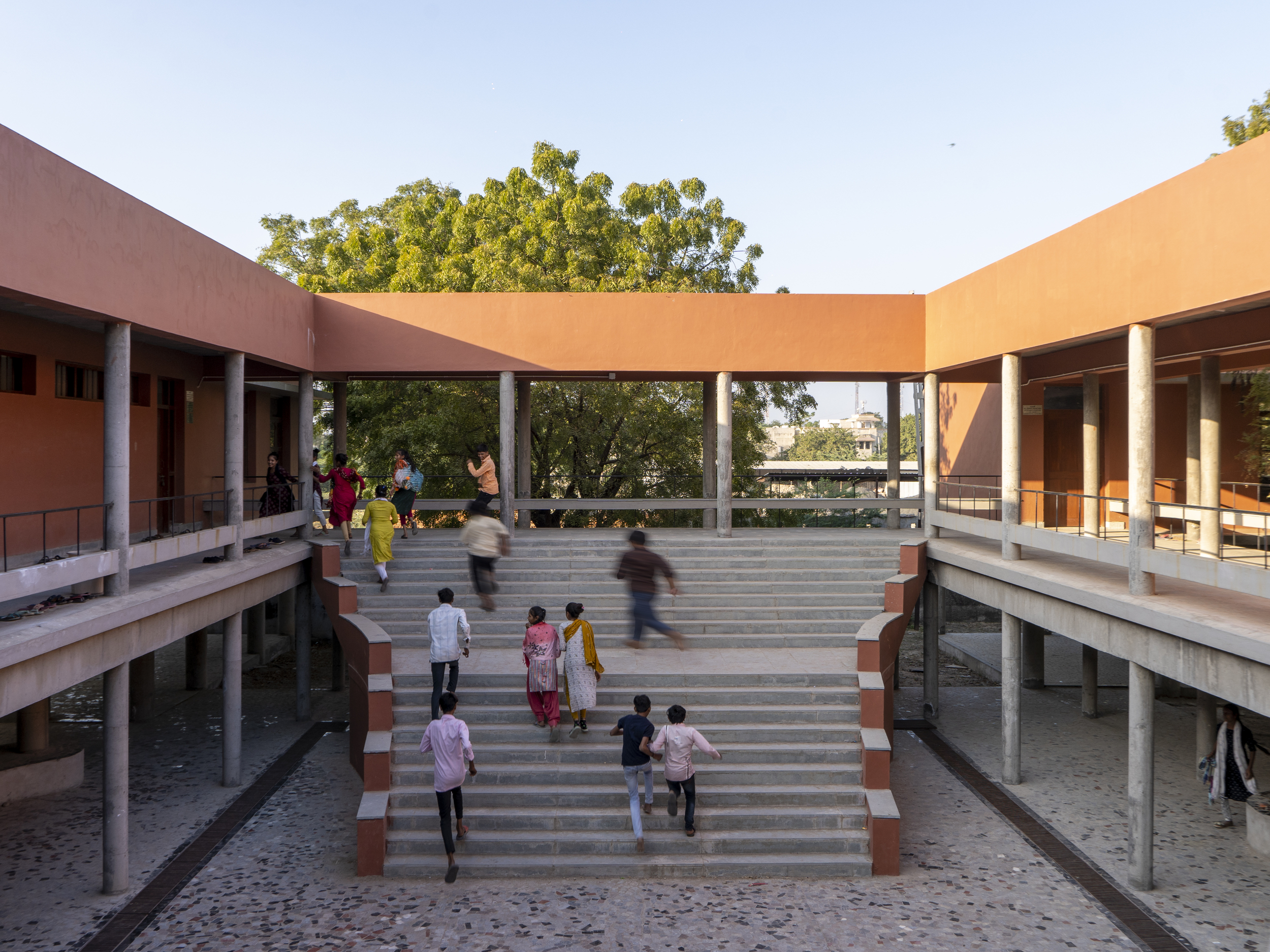ArchitectureLive! interviewed the newly elected Council of Architecture President Ar. Habeeb Khan and Vice President Ar. Sapna. We asked both about their plan of action for addressing the various issues with respect to architecture education, profession, and the Architects Act 1972.
AL!: Sir, and Madam, First of all, congratulations on getting elected for the post of President and Vice President. May I know what was the motivation for you to contest these elections?
HK: I have been involved with the council for some time now, about four years. I saw the internal working and took up issues with people who were at the helm. While at it, I realized that this isn’t the right way for the council to function. And I knew that sitting amongst friends and talking about the situation ain’t going to do any better. I knew that I had to chip in, and hence, decided to take the plunge. So, here I am.
MS: It has been a journey for me when I came into architecture- as a student, and then as a professional. I have been holding the post of chief architect and a member of the Council for the last six years. Having been through so many competition juries, I have seen the light of education as well. So, we need to work at the grassroots level for architecture education in India. It is very easy to pinpoint faults, but putting on the shoes and being at the job is what it takes. I guess I’m here to do exactly that!
AL!: What major changes should people expect from CoA during your tenure?
HK: We want to create a common platform for all, holding hands and walking together. If and when that happens, when architects as professionals and architecture as a profession is respected in society, we can expect a lot to change. We are going to work on two fronts- profession & academics. We will have our nodal offices, we will connect with architects, pool knowledge, take opinions and then, move forward with everyone.
MS: When we say that together we can bring about a change, we are looking at bringing the fraternity to a level, pan-India. Our nodal offices (comprising of CoA executive members and architects) will harvest information and wisdom, and seek to convert it into tangible action. If you speak about the gender inequality in the profession, it always has been two males sitting across the president and vice president chairs. So, it has been kind of opening the door for females for me in here.
HK: Let us understand one thing. Why has the government in the past, sidelined the CoA or haven’t listened to it? There must be many issues- the way we have been handling the act and the council, our regulations, or, the way we have been handling our government! These could be the possibilities. The government listening to us depends on the positivity and sincerity of our approach. The council is a part of the government, just like the AICTE or the MCI. So, it depends on the level of commitment, positivity, and dedication that we approach the government with. And, I’m sure they will listen.
AL!: So you agree that there is a great disconnect between the CoA and the Professional fraternity? What does CoA Plan to do about this?
HK: To discuss this relevance, we need to look at its past. Way back, when it all came together in 1972, it took a lot of time for erstwhile senior professionals to brush it up and make the Council effective. As circumstances proceeded, their successors who held executive posts in the Council were mostly from the field of education, and naturally, the focus shifted on academics. It, however, is tough to judge this situation to be a positive one or a negative; it just is how things became to be! We (Ar. Habeeb Khan & Ar. Sapna) are both practicing architects, and I’m into academics as well. The profession has changed in the last three decades, and rapidly in the last one. So, it is high time that the Council invests into the profession, and react to the changes. The Council will now work on two fronts, academic as well as professional. Our Nodal Committees across the country will work in tandem, invite practicing architects to put in their issues and problems and we will try to solve them, and come up with an action plan irrespective of the existing framework. We are all on the same page and the same side of the table, so let us work together and see how much can be made out of the current framework.
AL! So does it mean CoA is thinking of decentralisation of its duties and responsibilities? Can you please elaborate?
HK: Council will organize programs in six zones across the country, and all professionals will be invited. A nodal committee has been formed and the discourses will be steered ahead by reputed professional members of the society. The way forward is decentralization, there is no way out. And, we are moving forward with the agenda of reaching out to people ourselves, rather than they reach out to us, in whatever form of expression.
MS: The exciting part is that we have members on the executive committee from all across the nation, say, Andaman & Nicobar, Lakshadweep, Himachal, Chandigarh, Punjab, Maharashtra, and Meghalaya. So, we do have a pan-India presence.
AL!: There is also an increasing disconnect between the education and profession. Do you agree with that? If yes, is there any plan of action to address this?
HK: We are clear in realizing that the gap has increased and that this needs to be bridged as soon as possible. It has been thirty years or so, and to be honest, the Council is still struggling to fulfill the basic standards of architectural education. Surprisingly, people are still trying to find out ways of not fulfilling these standards. So, if we do a self-dissection, we will not be able to find out any pro-active contribution of this Council towards the betterment of the education. If it would have been possible to be proactive, maybe we could have a better educational scenario today. A young graduate gets paid less than a driver gets paid in his office. But, is the Council responsible for this? We as professionals have to answer this question collectively. Are we not responsible for creating a situation where we are trying to exploit junior members of our own fraternity? Teaching is a serious profession, and so is practice. Ideally, there should exist no gap between an academician and a practising architect. It should be a single effort in tandem. When we diverted these two things, we killed education.
AL!: Overall quality of architecture education has deteriorated drastically. What plans does the new team have to address this?
HK: Assessing quality is a very subjective matter. Judging quality needs the presence of a strong framework, which isn’t an easy job. Quality can be judged as a product that is accepted in the market. Apologies in advance for comparing a student with a product, but if he is accepted in the market, that is an indication of quality. What we believe in tandem with the government is that there needs to be a ‘minimum regulation’ in place. The ‘inspection raj’ has failed miserably. Our message is clear- this is your council. As much as the Council belongs to us, it belongs to all architects and students. We are taking a democratic and inclusive approach- come with your suggestions and proposals, and we will surely work together.
AL!: This needs elaboration. How do you plan to achieve this?
MS: We will primarily be working on two aspects- transparency & accountability. Earlier, the framework made council the boss, and the institutions were trailing behind. But now we have inverted the pyramid, giving institutions the power to empower future generations with knowledge and skills. Council is inclined to offer support and hand-holding, and we are even discussing mentorship proposals, wherein, established institutions will be able to guide the newer ones.
HK: On a fundamental level, the council wants to hold hands, and we want to bring the lagging colleges to a certain level. So, we are providing two options- mentor a college, or seek mentorship. Also, duplication of resources shouldn’t be happening. We are working on a portal that will connect all the institutes together, wherein, we are facilitating the sharing of library resources and Ph.D. researches. This data network, facilitated by the council will be accessed by all institutes across the country.
AL! With the changing times don’t you think there should be diversification in architecture education? I mean there is much that architects can do than just designing buildings? How does CoA plan to implement this?
MS: Not all architecture graduates have to go into core practice. We were, in a recent executive meeting discussing introducing diverse subjects in the curriculum. I believe, at present, fresher architects do have the liberty to get out of the grind, and make their own choice.
HK: When the act was made in the 70s, the profession was much different- one architect setting up his office and based on his work, going on to become iconic or otherwise. That has changed in the last decade- now it is more globalized, with a corporate hierarchy and multifaceted aspects to it. There is no Howard Roark now! Now, architects are only a part of the entire committee on any big project. At the Council level, we need to identify these changes. We need to incorporate these changes into practice and education. Similarly, the nature of students have changed, and faculties haven’t risen to that level. A faculty needs to understand the difference between information and wisdom and must be able to convert the information that the student has into wisdom that only he can impart. Expectations have changed, and unless we mold accordingly, we won’t be able to survive much longer.
AL!: Does CoA has any plan to work on the deteriorating quality of faculty in architecture institutes?
MS: We have our TRC (Training and Research Centres) facilities- it was renamed into NIASA but we came back to TRC again! We are aiming at an overhaul, where architects would visit centres (TRCs) and mentor faculties to make the quality of education better.
HK: We want TRC to be the academic wing of the council. And that doesn’t mean only students; teachers and institutions too will take part. It will encompass an overall development of education & profession through the TRCs. This means involving architects, improving education patterns, and giving it back to society, where we will increase awareness about architecture and design amongst people. We are decentralizing the TRC out of Pune, to all corners of the country. We agree with the minimum regulations. But as architects, we are wanting an entry and exit check. Call it whatever, but both checks need to be done. The exit exam will be an absolute quality check to determine whether you’re eligible to practice architecture.
MS: There’s another turning point to this. We need to deal with it sensitively. The goal is to bring our education at par with the global standards. There needs to be a public consensus on this as well.
AL!: There have also been discussions about Exit Exam & CEP through Amendments to Architects’ ACT. Can you share the details?
HK: People are disturbed, and there is a lot of negative feedback regarding the same. Architects assume that the attainment of the B.Arch degree makes them the best. A decade of practice makes them feel empowered, and a decade more makes them feel like Gods! An exit exam disturbs that comfort because your registration needs to be updated periodically. You cannot continue perpetually, even in the profession. In the global context, not qualifying the exit exam means you’re an architect who can only work under a registered architect who has qualified the exam. But, you get no power to sign drawings or bear the responsibilities that come along with. There are a lot of regulatory and legal frameworks as well, but implementing these will assure better professional competency in the long run, bringing us on a globally competitive level. However, this only happens with an amendment of the Architect’s Act 1972.
AL!: We lost Hall of Nations and now Central Vista Redevelopment plans are there. Has CoA become too weak to even raise these issues with the government?
HK: A group of architects came together to oppose the Hall of Nations’ demolition. But, they couldn’t do it because they are in a minority. There aren’t even one lakh architects, including academicians. How can a minority be listened to? Even then, making architects a majority doesn’t solve the problem. This will be solved when the society at large is aware of what architects do, and how and why they are important. No amount of petitions and signatures will be enough until the population, in general, is aware. All these closed-door seminars, conclaves and events are of zero use, the need of the day is to open these up. Unless we do that, we are wasting resources.
MS: I also feel that as architects, we need to rise above our interests. I’m sure there must have been a lot of jealousy over the Hall of Nations issue. So, these moral and ethical issues also come at play here. We have to rise above that.
AL!: We are talking about professionals, especially young architects aren’t getting fair and equal opportunities due to issues like tendering (L1), EMD and opacity in the processes of selection of architects for the public projects. What do you think of this issue, and how CoA can intervene in this?
MS: We need policies within the council to help fresh graduates. For a fresher, clearing the list of requirements to be eligible for competition gets hard. Say, in the current economic status, where will he get the EMD amount from? Where will he get the required expertise? Policies wherein the design and creativity becomes the main criteria needs to be brought in.
HK: AA lot of government agencies have been involved in the procurement of architectural services. It needs to be divided into two parts- one is creativity & design, and the other being execution. Linking these two into one unit invites trouble. The procurement of an architect’s service just for design purposes solves the problem. Say a young architect has won a competition based on design innovation, the execution of the same can be done according to the client’s brief by government agencies, or experienced architecture firms, in a hand-holding model as well! That is a somewhat ideal model, I believe.
AL!: It is observed that CoA is being sidelined by Government agencies. Don’t you think it is important for CoA to be involved in public projects & competitions to ensure transparency?
HK: Debates happen more often on public domain projects, but not so much on private projects despite them being equally big. So, despite private projects having a similar share, why don’t we question them? We always blame the government and associated agencies for being unethical to architects. Why don’t we ask private clients similar questions? Like, why hasn’t the process being followed, or why is this bad a design being implemented and so on.
AL!: I disagree. The difference is personal money and tax-payers’ money.
Money is money! Be it taxpayer’s money to be spent on a public project, or crores of a private client’s money. One cannot differentiate between public and private money when it comes to cases like these.
AL!: Is the Architect’s Act 1972 putting restrictions on CoA’s work?
HK: The Council is not any God. It isn’t the final authority. It works under a statutory legal framework, and it needs to work within the boundaries set by those rules. Also, the act hasn’t been made for the architect or beneficiaries, it has been made for the common people to protect themselves from any malpractice on the part of any architect. So, it has its restrictions & the same goes for the council.
AL!: Last, how much time do you think it would take for amendments to the Architects Act?
HK: We are working on the amendments- a lot of work has already been done! A version was submitted, but it came back and a committee was formed for the same. We are now looking at it from a fresher perspective, making it viable for the years to come. As soon as it’s done, we will send it to the government for approval and put it out for amendment.
ArchitectureLive! will follow up with the Council of Architecture with more questions in the near future.








One Response